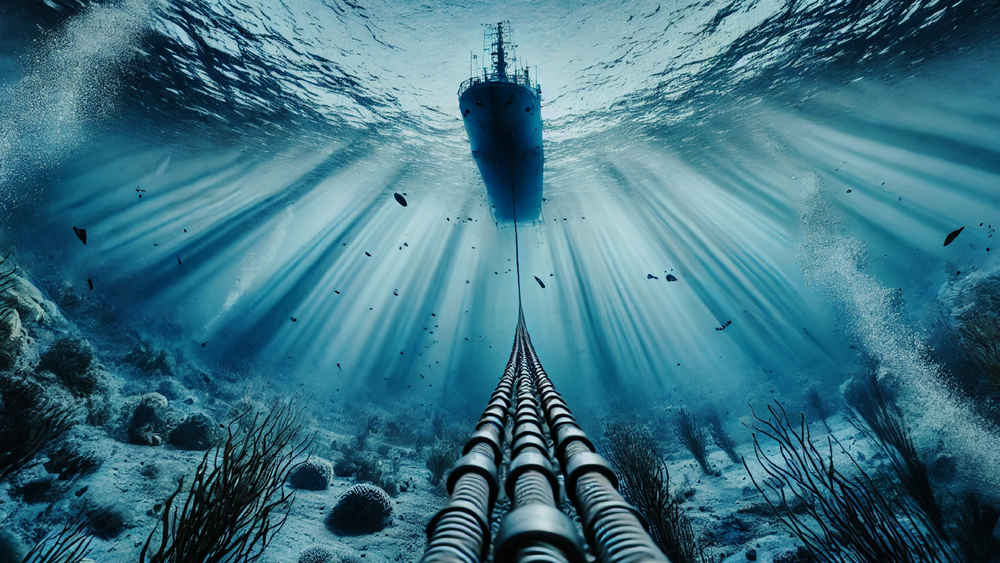Challenge
Europe wants reliable access to battery metals without geopolitical bottlenecks. One promising path is harvesting polymetallic nodules at 4–6 km depth using a tracked collector (“giant vacuum cleaner”) and a 5.5 km vertical transport system. That creates brutal requirements for the ROV umbilicals: deliver multi-megawatt power and high-integrity data over kilometers, tolerate launch/recovery without human intervention, and survive years of crushing pressure, fatigue, and corrosion. Off-the-shelf cables can’t do this. And swapping sections at sea must be simple, or downtime kills the mission and economics.
Solution
DeRegt co-engineered a deep-water umbilical architecture with Royal IHC and an EU consortium (Blue Nodules). First, define the system physics: a 5.5 km riser/transport string with multiple booster pumps, continuous power delivery (5 MW order of magnitude), and real-time telemetry. Then design the umbilicals for mechanical survival and maintainability; not just electrical spec.
Our key design decisions:
- One-fits-all section design. Every riser section uses the same cable build, so a damaged part can be cut out and replaced fast—no bespoke spares for each position.
- Automated clamping along 5.5 km. A ship-side system clamps/de-clamps the umbilicals to the vertical hose during launch and recovery. So: no manual labor required! While minimizing added loads on both umbilicals and riser. This removes a major offshore risk and speeds deck operations.
- Survivability in the abyss. Fragile components (fibers, small signal pairs) are placed toward the centre to protect them from crushing. Each steel armour wire is individually jacketed to resist corrosion; the cable is finished with double steel armor for crush and tensile load transfer.
- System integration and trials. The collector vehicle (Apollo II) and transport train were proven in EU programs with IHC/NIOZ, including Mediterranean trials (easier access, similar seabed, low tide), to validate handling, telemetry, and environmental protocols before full-ocean campaigns.
This combination of standardized sections, automated handling, and armor strategy turns an exotic prototype into something you can actually launch, recover, repair, and run at scale.
Result
The deep-sea mining string moved from research to commercially ready components: umbilicals that deliver the duty (power + data) while surviving real deck physics at kilometer scale. Operators gain:
- Faster turnarounds & fewer stops. Automated clamping eliminates diver operations and reduces handling-induced damage risks during launch and recovery.
- Maintainability offshore. The one-fits-all umbilical sections mean a single spare type can replace any segment, shortening repairs and simplifying logistics.
- Proven depth envelope. The Apollo II program and EU projects (Blue Mining/Blue Nodules) validated the concept for multi-kilometer operations and informed the final cable/termination stack. In short: real-world trials, not just models.
Bottom line: by engineering the umbilical and handling as a single system, DeRegt and IHC de-risked ultra-deep harvesting, turning a paper concept into an operational capability.
Expert view
“5.5 kilometers, zero divers: clamp, power up, harvest, repeat.”



.png)

